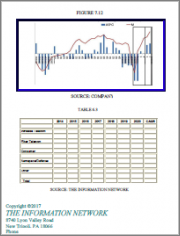
|
시장보고서
상품코드
1581325
<2024> 리튬이온 2차전지 제조 장비의 개발 현황 및 중장기 전망(-2035)<2024> LIB Manufacturing Equipment Development Status and Mid/Long-term Outlook (~2035) |
||||||
최근 글로벌 리튬이온 2차전지 시장이 점차 확대되고 있는 가운데, 2차전지 제조사의 생산 증설 현황이 급격하게 증가하고 있으며 이에 따라 2차전지 제조 장비 수요도 함께 증가하고 있습니다. 폭발적으로 증가하는 리튬이온 2차전지 시장에서의 성공 여부는 적기에 제품을 공급하여 Market Share를 확보하는 것이라 판단됩니다. 리튬이온 2차전지와 전기차, ESS 시장은 미래 성장이 확실히 담보되는 신 성장 동력으로 2차전지 제조 장비 협력사도 함께 성장하고 있는 매력적인 시장으로 부상하고 있습니다. 그러나 2023년은 전기차 캐즘((Chasm, 일시적 수요 정체) 현상으로 인해 2차전지 제조 장비 시장도 어려움을 겪었으며, 한중일 제조 장비 업체 간 이차전지 공장 증설 경쟁에 따른 가동률 저하로 업체간 희비가 엇갈리고 있으며, 향후 안정적인 품질관리 및 양산능력 보유 및 대응이 가능한 업체, 그리고 차세대 공정 및 신기술을 선점하는 업체가 2차전지 제조 장비 시장의 메인 업체로 자리매김 할 것으로 보여집니다.
본 보고서는 파우치형, 원형, 각형 등의 2차전지 형태별 제조 공정과 장비 특징 등을 살펴보았습니다. 또한 2차전지 메인 제조사별 생산 증설 전망과 공정별 제조 장비 시장 규모, 장비 제조사 현황과 차세대 공정(건식공정) 개발 현황 및 주요 2차전지 maker들의 생산Capa확장계획과 장비업체SCM 및 특징 등을 소개함으로써 리튬이온 2차전지의 제조 장비 흐름이 어떻게 바뀌고 있으며 향후 어떻게 변화될 것인지 전망해 볼 수 있는 내용을 담고 있습니다. 또한 한중일을 대표하는 주요 메이저 장비 업체들의 공정별 Peer Group 을 통한 경쟁력 비교를 통하여 이차전지 장비 시장 내 메이저 업체 별 실적 및 점유율 현황 및 증설 계획을 통한 미래 시장 구도 전망을 하였습니다. 주요 조사대상 장비업체는 전극공정 30개, 조립공정 50개, 화성공정 20개, 검사및기타장비 20개로 약 120여개 업체입니다.
1장에서는 2차전지의 원리와 종류에 대해 설명하였고,
2장에서는 2차전지 형태별 제조 공정을 요약하였습니다.
3장에서는 전극 공정 설명과 전극 장비의 특징,
4장에서는 조립 공정 설명과 조립 장비의 특징,
5장에서는 화성 공정 설명과 화성 장비의 특징을 설명하였습니다.
6장에서는 제조 장비의 신기술 개발 트렌드를 공유하고,
7장에서는 2차전지 장비 제조사를 공정 별로 나누어 알아보았으며,
8장에서는 제조 장비 시장 동향과 전망을 제시하고,
9장에서는 주요 장비 업체의 현황을 소개하였습니다.
10장에서는 2차전지 공정별 장비업체를 상세 비교해 보았으며,
11장에서는 주요 2차전지 업체별 증설 전망과 장비SCM에 대해 알아보았습니다.
제조 장비 개발 현황 및 장비 시장 전망에 대한 SNE 리서치에서의 조사 내용이 제조 장비 업체와 관련 부품 업체, 그리고 2차전지를 사용하는 고객사들에게 유용한 정보가 될 수 있기를 바래봅니다.
차 례
1. 2차전지의 이해
- 1.1 2차전지의 원리
- 1.2 2차전지의 장점
- 1.3 2차전지의 종류
2. 2차전지 형태별 제조 공정
- 2.1 전극 구조체 종류
- 2.2 파우치형 2차전지
- 2.3 원형 2차전지
- 2.4 각형 2차전지
- 2.5 제조사별 2차전지 형태
3. 전극 공정 (파우치형, 원형, 각형 공통)
- 3.1 Mixing
- 3.2 Coating
- 3.3 Pressing
- 3.4 Slitting
- 3.5 Vacuum Dry
4. 조립 공정
- 파우치형
- 4.1 Notching
- 4.2 Winding
- 4.3 Zigzag Stacking
- 4.4 Lamination & Folding/ Stacking
- 4.5 Tab Welding
- 4.6 Packaging
- 원형
- 4.7 Winding
- 4.8 Assembly
- 각형
- 4.9 Winding
- 4.10 Assembly
5. 화성 공정 (파우치형, 원형, 각형 공통)
- 5.1 Aging
- 5.2 Formation
- 5.3 Degassing
- 5.4 Folding
- 5.5 IR/OCV
6. 기술 개발 트렌드
- 6.1 전극(극판) 공정 신기술 Trends
- 6.2 조립 공정 신기술 Trends
- 6.3 화성 공정 신기술 Trends
- 6.4 Vision Application
- 6.5 Cell Tracking
- 6.6 Digital Transformation
- 6.7 전극 공정 및 건식 공정 기술
- 6.8 차세대(전고체) 공정 기술
- 6.9 차세대 공정 연구개발 Trend(기술별)
- 6.10 차세대 공정 연구개발 Trend (업체별)
7. 2차전지 장비 제조사
- 7.1 전극 공정
- 7.2 조립 공정
- 7.3 화성 공정
- 7.4 기타 장비, 물류 및 검사 공정
- 7.5 글로벌 장비 시장_업체별 실적 및 M/S-
- 7.6 글로벌 장비 시장_업체별 ‘22년 실적
- 7.7 글로벌 장비 시장_국가별 시장 현황
- 7.8 글로벌 장비 시장_공정별 Peer Group
8. 제조 장비 시장 전망
- 8.1 2차전지 수요 전망
- 8.2 Global 2차전지 생산 증설 전망
- 8.3 2차전지 Global 생산Capa 지역별 증설 전망
- 8.4 글로벌 이차전지_신규 Capa 전망
- 8.5 이차전지 장비_투자비 및 규모 산출
- 8.6 이차전지 장비_시장 규모 전망
- 8.7 이차전지 장비_공정별 규모 전망
- 8.8 이차전지 장비_장비별 규모 전망
- 8.9 이차전지 장비_지역별 시장 전망
- 8.10 이차전지 장비_업체별 규모 전망
9. 장비 업체 현황
- 9.1 장비 업체 전체 리스트 및 현황 일람
- 9.1.1 국내 상장 업체
- 9.1.2 국내 비상장 업체 및 해외 업체
- 9.2 국내 장비 업체_전극 공정
- 9.2.1 윤성에프앤씨 Yunsung F&C
- 9.2.2 티에스아이 TSI
- 9.2.3 제일엠앤에스 Jeil M&S
- 9.2.4 피엔티 PNT
- 9.2.5 씨아이에스 CIS
- 9.3 국내 장비 업체_조립 공정
- 9.3.1 하나기술 Hana Technology
- 9.3.2 필옵틱스 Phil Optics
- 9.3.3 엠플러스 Mplus
- 9.3.4 나인테크 Nain Tech
- 9.3.5 디에이테크놀로지 DA Technology
- 9.3.6 유일에너테크 Youil Energy Tech
- 9.3.7 디이엔티 DE&T
- 9.3.8 디에스케이 DSK
- 9.3.9 시스템알앤디 System R&D
- 9.3.10 코엠 Koem
- 9.3.11 우원기술 Woowon Technology
- 9.3.12 신진엠텍 Shinjin Mtech
- 9.3.13 디에이치 DH
- 9.3.14 베스텍 Bestech
- 9.3.15 동진기업 Dongjin
- 9.3.16 엔에스 NS
- 9.3.17 테크랜드 Techland
- 9.3.18 케이지에이 KGA
- 9.3.19 엠오티 MOT
- 9.4 국내 장비 업체_화성 공정
- 9.4.1 원익피앤이 Wonik PNE
- 9.4.2 에이프로 APRO
- 9.4.3 갑진 Kapjin
- 9.4.4 와이티에스 YTS
- 9.5 국내 장비 업체_기타 공정
- 9.5.1 한화/모멘텀 Hanwha/Momentum
- 9.5.2 에스에프에이 SFA
- 9.5.3 톱텍 Toptec
- 9.5.4 코윈테크 Cowintech
- 9.5.5 아바코 Avaco
- 9.5.6 대보마그네틱 Daebo Magnetic
- 9.5.7 이노메트리 Innometry
- 9.5.8 브이원텍 V-one Tech
- 9.5.9 자비스 Xavis
- 9.5.10 엔시스 Nsys
- 9.5.11 이아이디 EID
- 9.6 해외 장비 업체_중국
- 9.6.1 Wuxi Lead Intelligent Equipment, Lead China
- 9.6.2 Yinghe Technology 영합과기, 잉허커지
- 9.6.3 Lyric Robot 리위안헝, 리릭로봇
- 9.6.4 Hymson 하이무싱, 힘슨
- 9.6.5 CHR Hanke 항가과기, 항커커지
- 9.6.6 Colibri 콜리브리
- 9.6.7 United Winners Laser 연영격광
- 9.6.8 Priority Technology 센후이기술
- 9.6.9 Katop (Jiatuo Intelligent) 가토
- 9.6.10 Super Components 차오예
- 9.6.11 Geesun Intelligence 지양스마트
- 9.6.12 Nebula Electronics 성운주식, 네뷸라
- 9.7 해외 장비 업체_일본
- 9.7.1 Toray 東レエンジニアリング 도레이 엔지니어링
- 9.7.2 Hirano Tecseed ヒラノテクシ?ド 히라노테크시드
- 9.7.3 Primix 프라이믹스
- 9.7.4 Inoue 이노우에
- 9.7.5 Hitachi HighTech 히타치
- 9.7.6 Nishimura 니시무라
- 9.7.7 Nagano Automation 나가노 오토메이션
- 9.7.8 CKD Corp 씨케이디
- 9.8 해외 장비 업체_기타
- 9.8.1 Manz 만츠
10. 2차전지 공정별 장비업체 Peer group 비교
- 10.1 전극(극판) 공정
- 10.1.1 전극공정 업체 비교
- 10.2 조립공정
- 10.2.1 원통형, 각형 조립 공정 업체 비교
- 10.2.2 Notching, Stacking 조립 공정 업체 비교
- 10.3 화성 및 기타 공정
- 10.3.1 화성 및 검사공정 업체 비교
11. 주요 2차전지 업체별 Capa 증설 계획과 장비SCM 및 특징
- 11.1 LGES
- 11.2 삼성SDI
- 11.3 SK Innovation
- 11.4 CATL
- 11.5 NorthVolt
- 11.6 Tesla
Recently, as the global lithium-ion secondary battery market is gradually expanding, the production expansion status of secondary battery manufacturers is rapidly increasing, and the demand for secondary battery manufacturing equipment is also increasing. Success in the explosively growing lithium-ion secondary battery market is judged to be securing market share by supplying products in a timely manner. The lithium-ion secondary battery, electric vehicle, and ESS markets are emerging as attractive markets where secondary battery manufacturing equipment partners are also growing together as new growth engines with certain future growth.
However, in 2023, the secondary battery manufacturing equipment market also suffered due to the electric vehicle chasm (temporary stagnation in demand), and the operating rates of secondary battery factories increased due to competition among Korean, Chinese, and Japanese manufacturing equipment companies, resulting in mixed fortunes among companies. In the future, companies that can maintain and respond to stable quality management and mass production capabilities, and companies that take the lead in next-generation processes and new technologies are expected to establish themselves as the main companies in the secondary battery manufacturing equipment market.
This report examines the manufacturing process and equipment features by secondary battery type, such as pouch type, cylindrical type, and prismatic type. It also introduces the production expansion prospects of each major secondary battery manufacturer, the manufacturing equipment market size by process, the status of equipment manufacturers, the development status of the next-generation process (dry process), the production capacity expansion plans of major secondary battery manufacturers, and the equipment company SCM and features, thereby providing a forecast of how the manufacturing equipment flow of lithium-ion secondary batteries is changing and how it will change in the future.
In addition, through a competitiveness comparison of the major equipment companies representing Korea, China, and Japan through the process-based peer group, the performance and market share status of each major company in the secondary battery equipment market and the future market structure outlook through expansion plans were provided.
The major equipment companies being investigated are approximately 120 companies, including 30 electrode process companies, 50 assembly process companies, 20 formation process companies, and 20 inspection and other equipment companies.
- Chapter 1: explains principle and types of secondary batteries,
- Chapter 2: summarizes manufacturing process by secondary battery type.
- Chapter 3: describes electrode process and features of the electrode equipment,
- Chapter 4: describes assembly process and features of the assembly equipment,
- Chapter 5: describes formation process and features of the formation equipment,
- Chapter 6: shows trend of new technology development of manufacturing equipment,
- Chapter 7: examines secondary battery equipment manufacturers by process,
- Chapter 8: presents manufacturing equipment market trend and outlook,
- Chapter 9: introduces current status of major equipment companies,
- Chapter 10: compares in detail equipment manufacturers by secondary battery process,
- Chapter 11: examines expansion outlook of major secondary battery companies and equipment SCM
This SNE Research report on the development status of manufacturing equipment and the market outlook can be hopefully of help for manufacturing equipment companies, the related component companies, and customers who use secondary batteries.
Table of Contents
1. Introduction to LIB secondary batteries
- 1.1. Principle of secondary batteries
- 1.2. Advantage of secondary batteries
- 1.3. Types of secondary batteries
2. Manufacturing process by secondary battery type
- 2.1. Types of electrode structure
- 2.2. Pouch type batteries
- 2.3. Cylindrical type batteries
- 2.4. Prismatic type batteries
- 2.5. Secondary battery type by manufacturer
3. Electrode process (common in pouch, cylindrical and prismatic)
- 3.1. Mixing
- 3.1.1. Electrode Components
- 3.1.2. Comparison of Mixing Process
- 3.1.3. Mixing Equipment
- 3.2. Coating
- 3.2.1. Continuous Coating & Intermittent Coating
- 3.2.2. Coating Equipment
- 3.3. Pressing
- 3.3.1. Pressing Equipment
- 3.4. Slitting
- 3.4.1. Slitting Equipment
- 3.5. Vacuum Dry
- 3.5.1. Vacuum Dry Equipment
- 3.5.2. Equipment and process procedure by electrode structure
4. Assembly process
Pouch type
- 4.1. Notching
- 4.1.1. Notching equipment
- 4.1.2. Laser Notching & Blanking
- 4.2. Winding
- 4.2.1. Winding equipment
- 4.3. Zigzag Stacking
- 4.3.1. Zigzag Stacking equipment
- 4.4. Lamination & Folding/ Stacking
- 4.4.1. Lamination & Folding/ Stacking equipment
- 4.5. Tab Welding
- 4.5.1. Tab Welding equipment
- 4.6. Packaging
- 4.6.1. Packaging equipment
Cylindrical type
- 4.7. Winding
- 4.7.1. Winding equipment
- 4.8. Assembly
- 4.8.1. Driving part and transporting
- 4.8.2. Assembly equipment
Prismatic type
- 4.9. Winding
- 4.9.1. Winding equipment
- 4.10. Assembly
- 4.10.1. Assembly equipment
5. Formation process (common in pouch, cylindrical and prismatic)
- 5.1. Aging
- 5.1.1. Aging type
- 5.1.2. Aging equipment
- 5.2. Formation
- 5.2.1. Formation equipment
- 5.2.2. Formation electrical component
- 5.2.3. Jig Formation
- 5.3. Degassing
- 5.3.1. Degassing equipment
- 5.4. Folding
- 5.4.1. Folding equipment
- 5.5. IR/OCV
- 5.5.1. IR/OCV equipment
6. New Technology Development Trends
- 6.1. New electrode (plate) process technology trends
- 6.2. New assembly process technology trends
- 6.3. New formation process technology trends
- 6.4. Vision Application
- 6.5. Cell Tracking
- 6.6. Digital Transformation
- 6.7. Electrode process and Dry process technology
- 6.8. Next generation (solid state) process technology
- 6.9. Next generation process R&D trends (by technology)
- 6.10. Next generation process R&D trends (by company)
7. Secondary battery manufacturing equipment maker
- 7.1. Electrode process
- 7.2. Assembly process
- 7.3. Formation process
- 7.4. Other equipment, Transport & Inspection
- 7.5. Global equipment market_sales & M/S by maker
- 7.6. Global equipment market_sales in 2022 by maker
- 7.7. Global equipment market_status by country
- 7.8. Global equipment market_Peer Group by process
8. Market outlook for the manufacturing equipment
- 8.1. Secondary batteries_global demand outlook
- 8.2. Secondary batteries_global capacity outlook
- 8.3. Secondary batteries_global capacity outlook by region
- 8.4. Secondary batteries_new capacity outlook
- 8.5. Secondary battery equipment_investment & its scale
- 8.6. Secondary battery equipment_Market outlook
- 8.7. Secondary battery equipment_Market outlook by process
- 8.8. Secondary battery equipment_Market outlook by equipment
- 8.9. Secondary battery equipment_Market outlook by region
- 8.10. Secondary battery equipment_Market outlook by company
9. Equipment manufacturers
- 9.1. List of manufacturers and status
- 9.1.1. Korean companies (public-listed)
- 9.1.2. Korean companies (private) and overseas companies
- 9.2. Korean companies_Electrode process
- 9.2.1. Yunsung F&C
- 9.2.2. TSI
- 9.2.3. Jeil M&S
- 9.2.4. PNT
- 9.2.5. CIS
- 9.3. Korean companies_Assembly process
- 9.3.1. Hana Technology
- 9.3.2. Phil Optics
- 9.3.3. Mplus
- 9.3.4. Nain Tech
- 9.3.5. DA Technology
- 9.3.6. Youil Energy Tech
- 9.3.7. DE&T
- 9.3.8. DSK
- 9.3.9. System R&D
- 9.3.10. Koem
- 9.3.11. Woowon Technology
- 9.3.12. Shinjin Mtech
- 9.3.13. DH
- 9.3.14. Bestech
- 9.3.15. Dongjin
- 9.3.16. NS
- 9.3.17. Techland
- 9.3.18. KGA
- 9.3.19. MOT
- 9.4. Korean companies_Formation process
- 9.4.1. Wonik PNE
- 9.4.2. APRO
- 9.4.3. Kapjin
- 9.4.4. YTS
- 9.5. Korean companies_other process
- 9.5.1. Hanwha/Momentum
- 9.5.2. SFA
- 9.5.3. Toptec
- 9.5.4. Cowintech
- 9.5.5. Avaco
- 9.5.6. Daebo Magnetic
- 9.5.7. Innometry
- 9.5.8. V-one Tech
- 9.5.9. Xavis
- 9.5.10. Nsys
- 9.5.11. EID
- 9.6. Overseas companies_China
- 9.6.1. Wuxi Lead Intelligent Equipment, Lead China
- 9.6.2. Yinghe Technology
- 9.6.3. Lyric Robot
- 9.6.4. Hymson
- 9.6.5. CHR Hanke
- 9.6.6. Colibri
- 9.6.7. United Winners Laser
- 9.6.8. Priority Technology
- 9.6.9. Katop (Jiatuo Intelligent)
- 9.6.10. Super Components
- 9.6.11. Geesun Intelligence
- 9.6.12. Nebula Electronics
- 9.7. Overseas companies - Japan
- 9.7.1. Toray
- 9.7.2. Hirano Tecseed
- 9.7.3. Primix
- 9.7.4. Inoue
- 9.7.5. Hitachi HighTech
- 9.7.6. Nishimura
- 9.7.7. Nagano Automation
- 9.7.8. CKD Corp
- 9.8. Overseas company_Others
- 9.8.1. Manz
10. Comparison of equipment manufacturers by secondary battery process
- 10.1. Electrode (electrode plate) process
- 10.1.1. Electrode process equipment manufacturer
- 10.2. Assembly process
- 10.2.1. Cylindrical, prismatic manufacturer
- 10.2.2. Notching, stacking equipment manufacturer
- 10.3. Formation and other process
- 10.3.1. Formation & inspection equipment manufacturer
11. Capacity expansion plan of major secondary battery companies - equipment SCM and its character
- 11.1. LGES
- 11.2. SamsungSDI
- 11.3. SK Innovation
- 11.4. CATL
- 11.5. NorthVolt
- 11.6. Tesla
(주말 및 공휴일 제외)


















